Previous Page
|
Next Page
PREFACE
Since the year 1942, when the veil was torn off the face of the greatest
tragedy ever suffered by our people, in which were killed and destroyed hundreds
of Jewish cities and towns in Nazi-occupied Europe, among these our town
'Mezirich-Godol", an ancient Jewish community, which was uprooted and
raked into a flood of blood and brimstone, the survivors of Mezirich in Israel
have taken it upon themselves to meet once a year every year during "Chol
Hamoed Succot" - the "Yorzeit" Day, in memory of the liquidation
of the Mezirich Ghetto, in order to raise its holy memory and unite with the
souls of our dear holy ones who were murdered by their damned oppressors.
However, that is not all the survivors want to do. Their eyes have travelled
far, to a place where there is a warm and vibrant Jewish community with a
glorious past and where there is now empty space, desolate and destroyed.
And in our saddened hearts a decision was taken to erect a memorial for the
Jewish community that was destroyed, and to leave there a name and a memory,
for us, for our sons and daughters after us, for generations to come, in the
way of commemoration in books in the Hebrew language, in Yiddish, and recently
in English, which will serve as an eternal memory and soul candle for the image
of the community in life and in destruction of her residents and communal
workers, her sons who watch over the embers of the past, and the vibrant youth
who trained themselves for the future, on the synagogues, institutions, youth
movements, schools and institutions of learning.
For this purpose, the Council of the Mezirichers in Israel has taken upon
itself this historic undertaking to carry out what the majority of the people
want. All these years, the Council communicates faithfully with the Mezirichers
in the Diaspora, especially with the community in Canada. Former Council
members deserve to be recognized for their life's work in laying down the
foundation for commemorating Mezirich. The people continuing in their ways are
the members of the present Council: Israel Zinman, David Kramer, Dina Kurtz
Yanai nee Pressman, Mordechai Matzman, Noah Kaminshein, Mordechai Tennenbaum,
Mordechai Averbuch. The Council has chosen a Cultural Committee from the
Community and the second generation Mezirichers as follows: Ruth Tennenbaum,
Margalit Lempel nee Fershtman, Rachel Shalom nee Arion-Upshtein from Mezirich.
We do not come to benefit ourselves for the great labor we invested in carrying
out the wishes of the majority. On the contrary, we dearly appreciate the great
privilege that has befallen the elected Council members all through the years,
in the past and in the present, to do one last holy deed for the Mezirich
community.
During the years, a memorial book was written: 'Mezirich-Godol in Building and
Destruction". A memorial stone was erected at the Holon Cemetery. Ashes
were brought from the mass grave site and buried in the basement of "Yad
Vashem" in Jerusalem. We participated in the construction of"Beit
Wohlin" and have a room there, the "Mezirich Room" in Heichal
Yahadut Wohlin. We commemorated the partisans and soldiers of Mezirich on a
Wall near Heichal Wohlin in Givatayim. The "Remez" School in Holon
adopted the Mezirich community, where Council members participate every year on
Holocaust Day in a memorial service.
After 50 years, in 1992, when relations with the Ukraine were renewed, the mass
grave site in the killing valley of Nevirkov was fenced, and a memorial stone
was erected, in which a Scroll with all the names of the victims of Mezirich
was concealed. In 1995, the site of the Old Cemetery of Mezirich was fenced.
The cemetery was completely destroyed and only a few stones were scattered in
the field. A memorial stone was erected there too, a symbol for the tents of
the Righteous. Every once in a while, the Council organizes visits to Mezirich.
The second and third generation of Mezirichers, come to the grave site and
unite with the memory of the 3000 Jews of Mezirich who were the victims of the
Holocaust.
It is our wish that our children and future descendants in Israel and in the
Diaspora shall know their roots and origins. And thus shall be carried out the
vision of the Prophet: "And He shall return the heart of fathers onto
their sons, and the heart of sons onto their fathers".
In the name of the Council and the Cultural Committee:
Israel Zinman December 31, 1999
To remember and not to forget!
Greater Mezirich
The Location of Mezirich.
In the middle of the Wohlin
Region was centered the Jewish Town of Mezirich, whose name in the Slavic
language
means "between the rivers".
The Wohlin Region is stretched out in Western Ukraine, a fertile and
flourishing area partially covered by forests, and bordering the
Polesia District. It has two rivers - one in the east, called Slutch, and one
in the west, called Horin. Between these two rivers was the town of Mezirich
which was known by the name Greater Mezirich, thus called, to differentiate it
from the Small Mezirich near Ostrogh.
The Town of Mezirich occupied a very honourable place in the history of
Hassidism due to the Rabbi Dov Beer "The Great Maggid", who was a
student and later succeeded the "Baal Shem Tov", the founder of
Hassidism. Mezirich was famous as the Center of Hassidism. Her name was
mentioned in many sources, in the history of Kabala and Hassidism, and in
Russian and Ukrainian Chronicles from the 16"' century.
In the 18th century, about 2000 Jews lived in Mezirich. After the death of the Great
Maggid Rabbi Dov Beer, the Jewish population dwindled. In 1932, there were 3000
Jews registered living, in Mezirich, most of whom perished under the Nazis in
the Holocaust, and were buried in a mass grave in a brickyard in the village of
Nevirkov 4 km. from the town of Mezirich.
Scenes from the Town
Topographically, the town was divided into two heads, and they are: The old
town and the new town, which were connected by the "Paved (Brick)
Street” from which branched out streets and alleys in which lived Jewish
workmen.
In the middle of the old town stood the Great Synagogue, the Schoolhouse of the
Maggid, the Polish School, the Church, the Pharmacy, and all the other stores.
In the Hoif Street were the Palaces of Stetzky, who owned the land of the town,
hospital, post office, the oil press and barley workshops, etc. The Town of
Mezirich was not big but was divided into 3 areas, distinguishable from one
another, but all excelled in their special characteristics. The areas were:
The Tile Street which concentrated in it the mud of the town, the level of
which rose especially in the Fall and in the Spring, until it became impossible
to cross the street. In this street were concentrated all the laborers,
merchants and beggars. From all the open windows could be heard sounds of the
sewing machines of the tailors, sounds of the shoemakers' hammers, and the
singing voices of the artists.
The Marketplace - was the center of daily life, in which Fairs were held,
market days, to which arrived the fruit, vegetables, fowl, etc. Wagons loaded
with merchandise, merchants, and salesmen.
The back streets were the spiritual center in which gathered the Rabbis, the
Slaughterers, the Torah Schools, the Library, and more.
Most of Mezirich's Jews dealt in commerce. Only a small part made their living
in labour and worked for local consumption but also for export, such as,
rope-making, winter gloves, crates, etc. In the time of Polish rule, the Jews
enjoyed a peaceful and serene life. They were allowed to deal freely in
commerce, and a number of Jews held government posts. This situation continued
until 1937. Then took a turn for the worse on the part of the Polish Authority
towards the Jews. The anti-Semitic wave spread and hurt not only Jews but the
independent Polish Authority as well. The Jews were removed from their jobs.
EDUCATIONAL INSTITUTIONS
Education started in the "Cheder" (The Room).
In the beginning of the 20th century, in 1908, Rabbi Chaim David Glazer opened the first Hebrew School.
Russian was also taught there. Later, a Hebrew School was opened for girls. In
1926, the "Tarbut" School was opened, with 7 classes, and was
operated until 1939. In the town, there was naturally also a Polish State
Public School, in which also Jewish children studied.
Only a small number of Mezirich children continued their education in high
school. The Hebrew language was known by all the young people. In Mezirich
there was a Zionist Movement which brought spirit and interest to the town's
gray life. It especially showed the youth new horizons full of hope for a new
life.
MANY YOUTH MOVEMENTS AROSE IN THE TOWN
In 1918, all Mezirich's youth was organized under one group called: "Bnei
Zion"', which opened Hebrew night classes. This group taught love for Zion
and for the Jewish people's spiritual values. In 1924, a branch of
"Hechalutz" (Pioneer) opened. Later, other movements such as:
"Hashomer Hatzair", "Hachalutz Hatzair, "Hashomer
Hadati", "Beitar", etc. A number of young people from Mezirich
who belonged to these youth movements eventually immigrated to Israel and
stayed there.
RABBI DOV-BEER, THE MAGGID OF MEZIRICH
Rabbi Dov-Beer, the Maggid of Mezirich, was known in the realm of Hassidism as
the brilliant student and successor of the Baal Shem Tov, and as the founder of
Hassidism. and spreader of its doctrine. Rabbi Dov Beer was born in the town of
Turtchin in 1704 and stems from our Holy Rabbi, the writer of the Mishna, Rabbi
Yehuda Hanassi.
Rabbi Dov Beer was a great scholar, sharp and well-versed in the Torah and the
Talmud. In his spare time, he studied the Kabbalah, travelled and passed
through several cities in the Vohlin Region, preached to audiences in houses of
learning. His students were many, and they spread his teachings in many areas of
the Diaspora. Following the death of the Baal Shem Tov, Rabbi Dov Beer replaced
him, sitting and working in the Town of Mezirich, spreading his teachings, and
thus obtained the name of "The Maggid of Mezirich", having lived in
Mezirich. Thus, Mezirich got its name - "Mezirich of the Maggid".
Rabbi Dov Beer was a great scholar and well-versed in the literature of the
Kabbalah. He became famous as a preacher-Maggid, who by way of his wonderful
sermons and the ways of Hassidism, succeeded in making his listeners admire
him. He knew the people's way of thinking and their spiritual needs. He had
special characteristics, a bright countenance, arousing respect. All these
qualities turned him into the head of the Hassidic Movement after the death of
the Baal Shem Tov. Rabbi Dov Beer adopted the method of the Baal Shem Tov which
is, to worship God in joy. When he became the head of the Hassidic Movements,
it was a strong force. Under his influence, many students joined the movement,
such as well-known rabbis and geniuses. After his death, his son took his place.
The Main Teachings of the Maggid of Mezirich
The love and worship of God, joy and enthusiasm, prayer and steadfastness,
these are the ways of Hassidism. There is nothing below that does not have a
root above. What is compassionate, so are you compassionate. Belief is the
foundation of everything. Belief is good for man. Prayer is coupled with
divinity - thus prayer must be with joy and a great enthusiasm.
Fearing God is uplifting and not fear of punishment. Thus one loves God more.
The righteous stirs God's compassion for all of Israel.
Previous Page
|
Next Page
This material is made available by JewishGen, Inc.
and the Yizkor Book Project for the purpose of
fulfilling our
mission of disseminating information about the Holocaust and
destroyed Jewish communities.
This material may not be copied,
sold or bartered without JewishGen, Inc.'s permission. Rights may be
reserved by the copyright holder.
JewishGen, Inc. makes no representations regarding the accuracy of
the translation. The reader may wish to refer to the original material
for verification.
JewishGen is not responsible for inaccuracies or omissions in the original work and cannot rewrite or edit the text to correct inaccuracies and/or omissions.
Our mission is to produce a translation of the original work and we cannot verify the accuracy of statements or alter facts cited.
 Mezirich, Ukraine
Mezirich, Ukraine
 Yizkor Book Project
Yizkor Book Project
 JewishGen Home Page
JewishGen Home Page
Yizkor Book Director, Lance Ackerfeld
This web page created by Lance Ackerfeld
Copyright © 1999-2026 by JewishGen, Inc.
Updated 6 July 2002 by LA
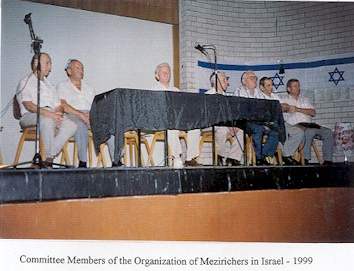

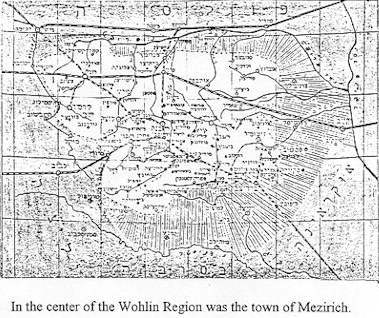
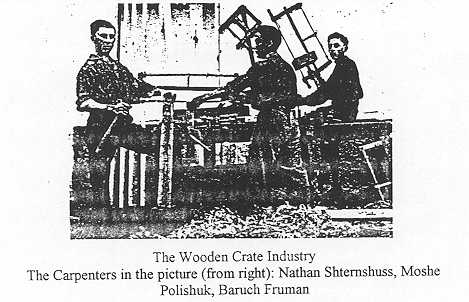
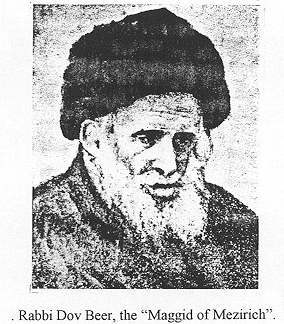
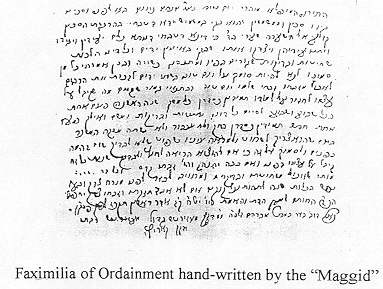
 Mezirich, Ukraine
Mezirich, Ukraine
 Yizkor Book Project
Yizkor Book Project
 JewishGen Home Page
JewishGen Home Page